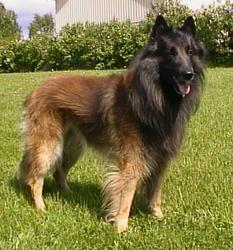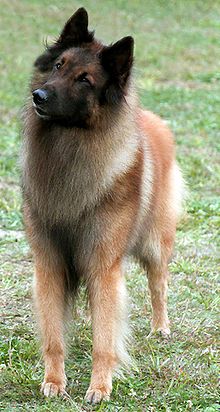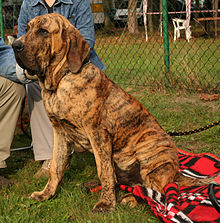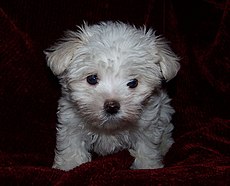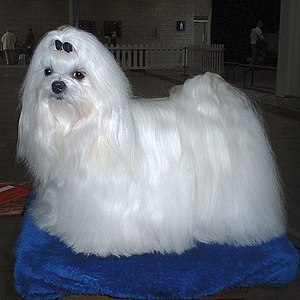//

A terrier is a dog of any one of many breeds or landraces of terrier type, which are typically small, wiry, very active and fearless dogs. Terrier breeds vary greatly in size from just a couple of pounds to over 70 pounds and are usually categorized by size or function. There are five different groups with each group having several different breeds.
History
Most terrier breeds were developed in Great Britain and Ireland. They were used to control rats, rabbits, and foxes both over and under the ground. Some larger terriers were also used to hunt badgers. In fact, the word terrier comes from the Middle French terre, derived from the Latin terra, meaning earth. Terrier is also the modern French for “burrow”. The Kerry Blue Terrier and Airedale, however, are particularly noted for tackling river rats and otters in deep water. Different localities raised terriers suited to their hunting or vermin control needs. Terriers were crossed with hunting dogs, fighting dogs, and other terriers. In the mid-19th century, with the advent of dog shows, various breeds were refined from the older purpose-bred dogs. All of today’s terrier breeds are bred primarily as pets.The gameness of the early hunting terriers was exploited by using them in sporting contests. Initially, terriers competed in events such as clearing a pit of rats. The dog that was fastest in killing all the rats won. In the 18th century some terriers were crossed with hounds to improve their hunting, and some with fighting dog breeds to “intensify tenacity and increase courage”.[1] Some of the crosses with fighting dogs, Bull and Terrier crosses, were used in the blood sport of dog fighting. Modern pet breeds developed from the Bull and Terrier, such as the Miniature Bull Terrier, are listed by the Fédération Cynologique Internationale (FCI) under Bull type terriers.Today, most terriers are kept as companion dogs and family pets. They are generally loyal and affectionate to their owners but can be “big characters” requiring a firm hand.
Genetics of origins
Genetic analysis shows that most terriers are in the “modern/hunting” genetic cluster of dog breeds developed from the same pool of ancestors in Europe in the 19th century. A few terriers are found in the “mastiff” genetic cluster with Pomeranians, Labrador Retrievers, and other large-headed dogs, and the Tibetan Terrier is found in the older grouping of Asian and African dogs, along with the Pekingese.[3]Appearance
Terriers range greatly in appearance from very small, light bodied, smooth coated dogs such as the English Toy Terrier (Black and Tan), which weighs as little as 2.7 kg (6 lbs), to the very largest rough coated Airedale Terriers, which can be up to 32 kg (70 lbs) or more. As of 2004, the United Kennel Club recognized a new hairless breed of terrier derived from the Rat Terrier called the American Hairless Terrier.Terrier types and groups
In the 18th century in Britain, only two types of terriers were recognized, long- and short-legged.[4]Today, terriers are often informally categorized by size or by function:
- Working terriers
(Hunting types): Still used to find, track, or trail quarry, especially
underground, and sometimes to bolt the quarry. Modern examples include
the Jack Russell Terrier and the Patterdale Terrier. The original types of hunting terriers include
- Fell terriers: breeds developed in northern England to assist in the killing of foxes, and
- Hunt terriers: breeds developed in southern England to locate and kill or bolt foxes during a traditional mounted fox hunt.
- Toy terriers: Bred “down” from larger terriers, these terriers are shown in the Toy or Companion group. Included among these breeds are the English Toy Terrier and the Yorkshire Terrier. While small, they retain true terrier character and are not submissive “lap dogs“.
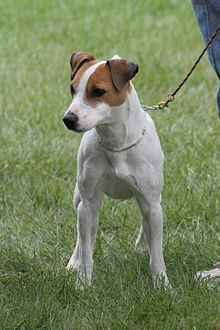
- Bull type Terriers: The Bull and Terrier types were originally combinations of bulldogs and terriers as general mixed breed bull-baiting and pit dogs. In the late 19th century, they were refined into separate breeds that combined terrier and bulldog qualities. Except for Boston Terriers, they are generally included in kennel clubs’ Terrier Group. Some breeders have bred modern Bull type terrier breeds, such as the Bull Terrier, American Pit Bull Terrier and Staffordshire Bull Terrier, into suitable family dogs and show terriers. These breeds and other descendants of the Bull and Terrier types, such as the Asian Gull Terr, are among the dog breeds still raised for illegal dog fighting.
Breed groups
For more details on this topic, see the Terrier Group article
Breed Groups are groupings of similar breeds of dog by kennel clubs; Breed Groups are not scientific classifications, and breeds included in a Breed Group will vary from club to club. The Fédération Cynologique Internationale, The Kennel Club (UK), Canadian Kennel Club, American Kennel Club, Australian National Kennel Council, New Zealand Kennel Club, and United Kennel Club
as well as with the myriad hunting and pet registries may all vary in
which breeds of terrier are included in the various Breed Groups that
the club uses. The Miniature Schnauzer is placed in the Terrier Group by the American Kennel Club but not categorised as Terrier by the Kennel Club (UK), which places all Schnauzers in the Utility Group. Boston Terriers
are true terriers although the Kennel Club also places them in the
Utility Group, while the Canadian Kennel Club places them in the Non-Sporting Group. The American Kennel Club and the Canadian Kennel club recognise the Toy Manchester Terrier in the Toy Group, while the Australian National Kennel Council] does not recognise the breed at all. The Tibetan Terrier and the Tchiorny Terrier (Black Russian Terrier) are terriers in name only and not related to the other terriers.The organization of each breed group varies from club to club as well. The Fédération Cynologique Internationale subdivides the Terrier Group into Sections, including Large and medium-sized Terriers, Small-sized Terriers, Bull type Terriers, and Toy Terriers, while other major national kennel clubs do not subdivide the Terrier Group, although some terrier types are placed in the Toy Group by some kennel clubs, and some terriers are placed in other Breed Groups. Listed at the bottom of the article are all Terrier breeds organized by Fédération Cynologique Internationale (FCI) Section.
GROUPINGS OF TERRIERS
| Large and medium-sized Terriers | |
|---|---|
| Small-sized Terriers | |
| Bull type Terriers | |
| Toy Terriers | |
| Not categorized by FCI as Terrier (in another group or not recognised) |
|





